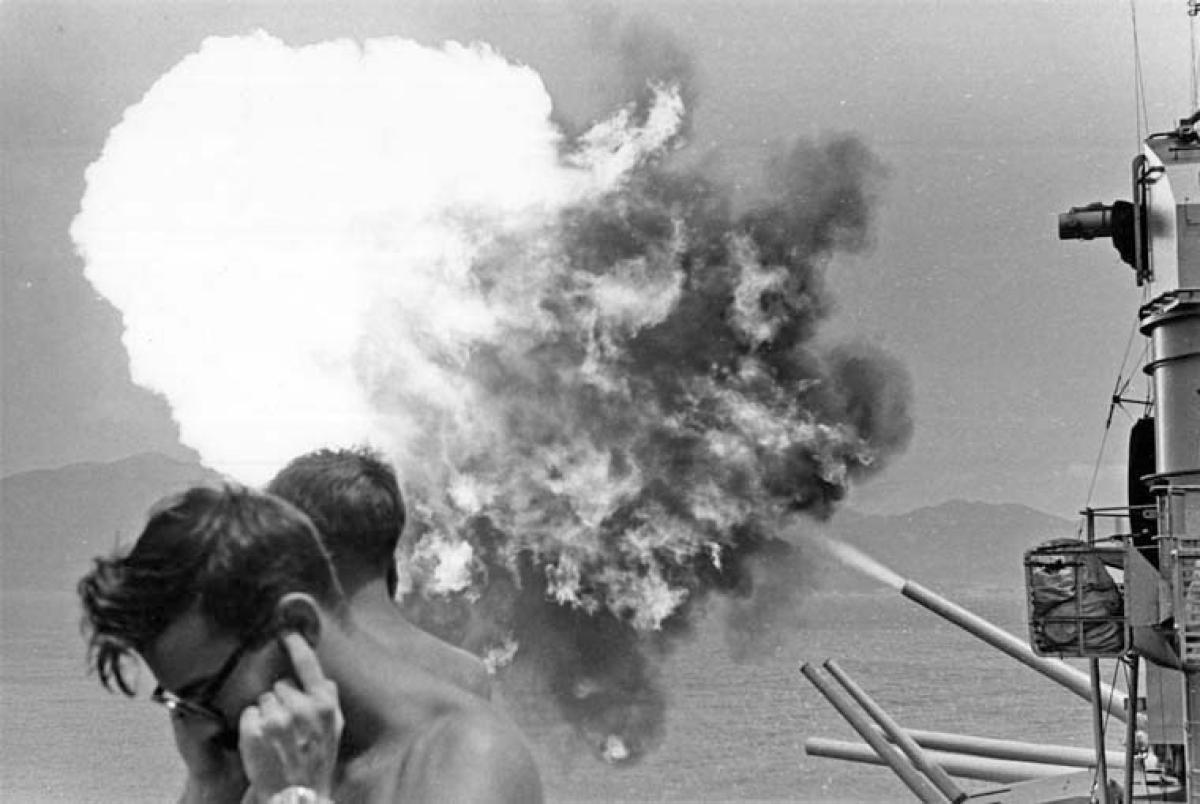In the early morning of 22 February 1969, a radio call from a Marine outpost just south of the so-called “demilitarized zone” in Vietnam calmly but urgently requested assistance. Steaming in the dark waters of the South China Sea was a giant of a ship, the USS New Jersey (BB-62). She was the Navy’s only battleship, resurrected from the mothball fleet less than a year before. Together with a Coast Guard cutter, the behemoth answered the plea for assistance by opening up with her portside 5-inch guns and then followed with salvoes from her main 16-inch battery. Radarman Third Class Bob Fulks could hear the staccato bursts of machine-gun fire on the radio as he coordinated with spotter Lance Corporal Roger Clouse to rain death and destruction onto a large number of enemy troops who were closing in on the embattled Marines.
The initial rounds landed very close to the Marines’ position, because that was where the enemy was. As Fire Controlman Rick Crawford watched the plot of cascading rounds develop, they formed an almost perfect circle, painting a harrowing image that showed the Marines were completely surrounded. Sailors and Marines worked together for hours to fight off the threatening force, their young voices speaking calmly by radio in the midst of great chaos and impending catastrophe. Round after round erupted from barrels that grew hotter and hotter until the grease on the guns’ recoil slides began to bubble. As the battle wore on, the diameter of the plotted circle began to expand, presenting a reassuring image of gradual enemy withdrawal. Finally, after five-and-a-half hours and nearly 2,000 rounds, the enemy broke contact and withdrew.
The incident was summed up rather succinctly by Marine Major Ron Smaldone—in command of the beleaguered outpost—when he told the New Jersey’s commanding officer, Captain Edward Snyder Jr., that “if it hadn’t been for New Jersey, they would have zapped our ass.”
After returning to the States in the spring of 1969, the New Jersey was scheduled to go back to Vietnam that September. Her new captain, Robert Peniston, had just reported and was about to take command when word came from Washington that the ship would be assigned not to the 7th Fleet but to the mothball fleet. Even though American servicemen continued to fight in the jungles and highlands of Vietnam, the “battlefield” in Washington had taken precedence and, influenced by the nation’s darkened mood over the war in Vietnam and mounting fiscal problems, the Navy’s one and only battleship was to be decommissioned.
When Captain Peniston took the podium at the ship’s decommissioning ceremony, he spoke directly to the ship, saying: “. . . rest well, yet sleep lightly, and hear the call, if again sounded, to provide ‘firepower for freedom’ [the ship’s motto].”
Miraculously, the New Jersey again got the call. Recommissioned at a time when America again embraced its military, she once again fired shots in anger—having done so in World War II, Korea, and Vietnam—this time delivering early salvoes in a very long war that continues today in the troubled Middle East.
The vicissitudes of time and circumstance once again sent the New Jersey back into what was surely her final retirement in 1991. That decision may well have been the right one for the time, but as we face an uncertain future where great dangers lurk and fiscal fears often overshadow concerns of national security, the words of Captain Snyder—delivered as he relinquished command—echo mournfully and perhaps presciently in the halls of power where such decisions are made: “War is hell, and it is expensive, and the American people have tired of the expense of defending freedom.”
Derived largely from Paul Stillwell’s classic book Battleship New Jersey: An Illustrated History.
Lieutenant Commander Cutler is the author of several Naval Institute Press books, including A Sailor’s History of the U.S. Navy and The Battle of Leyte Gulf.



